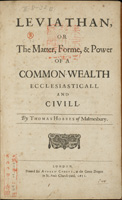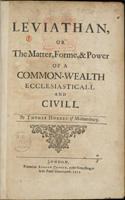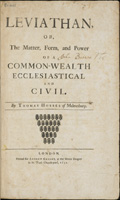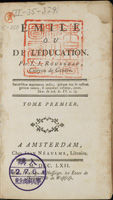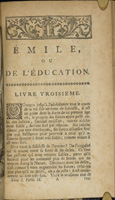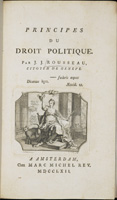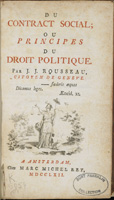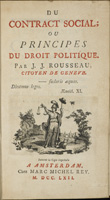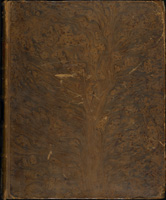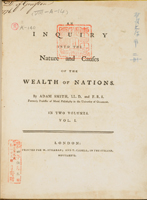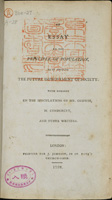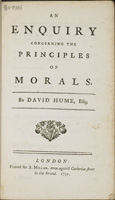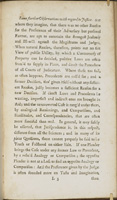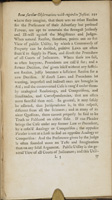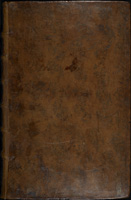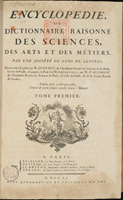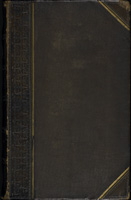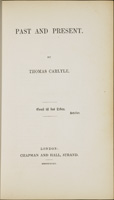Other Rare Books Collection
The General Collection is the collection of other rare books published before 1850 purchased by Hitotsubashi University and the pre-1850 books of the Sano Collection (貴D), the Murase Collection (貴E), the Ueda Collection (貴F), the Lexis Collection (貴G), the Aoyama Collection (貴H), the Rachi Collection (貴K), the Yamauchi Collection, and the Narumi Collection. Recent acquisitions include Modern European Social Science Rare Books (貴J, catalog available, 869 volumes), the Juridical Dissertations Collection (German juridical dissertations, 17,673 items, 616 volumes), the Henry Grattan Collection (貴A-B103, Irish history, catalog available, 325 items), the Collection of Literature on the Scottish Enlightenment (貴A-B353-B438, catalog available, 90 items), and the Collection of Research Materials on Western Social Economic Thought (貴A-B439-B578, relating to the history of French social economic thought, catalog available, 200 items).
Reflecting the historical accumulation of research at Hitotsubashi University, the more than 10,000 books in the General Collection cover a broad range of disciplines of social science and human science, varying from the sixteenth-century works of More, Erasmus and Bodin to the nineteenth century. Included in the collection are a first edition of Hobbes’ Leviathan (1651), a first edition of the Encyclopedie (1751), a first edition presentation copy of Malthus’ Principle of Population (1798) and a first edition of the same author’s Definitions in Political Economy (1827, presentation copy to Say, with marginalia by the latter). It is striking that many of the books in the collection are not listed in the Goldsmiths’-Kress Library, and that there are a large number of books by and about Robert Owen. The collection also includes unpublished correspondence from Henry S. Salt, founder of the humanitarian league, to the pacifist Bertram Royde, correspondence from celebrated French writers such as Hugo and Balzac, and lithographs of Vienna at the time of the 1848 Revolution.
- Catalogue of old and rare foreign books mainly from the general collections, Tokyo : Hitotsubashi University Library, 1976
- A list of rare books of social sciences in modern Europe, Tokyo : Library of Hitotsubashi University, 1980
- You can search for newly arrived books in the HERMES-Catalog (Online Library Catalog).
Hobbes’ Leviathan
Leviathan
(貴C:32 , 貴C:31, 貴A:B593)
Publication details
Leviathan, or, The matter, forme, & power of a common-wealth ecclesiasticall and civill / by Thomas Hobbes of Malmesbury
Publisher: London : Printed for Andrew Crooke …
Publication date: 1651
Physical description: [8], 396 [i.e. 394] p., [1] folded leaf of table ; 29 cm. (fol.)
Other title: AT:Leviathan, or, The matter, forme, and power of a common-wealth ecclesiasticall and civil
Notes: First ed., 1st issue
Title vignette: ornamental head with scrolls and tassels
Added t.p., engraved
Head-piece, initials
Marginal notes
Pages 247-248 repeated in numbering; p. 257-260 omitted in numbering
Errata: prelim. p. [8]
Author: *Hobbes, Thomas, 1588-1679
Language: English
(Publication details taken from 貴C32 (authentic edition))
Explanation
This is the chief work of Thomas Hobbes, 1588-1679, the English philosopher and political writer. The celebrated phrase bellum omnium contra omnes can be found in this work. Leviathan is a huge monster described in the book of Job in the Old Testament. Hobbes compares it to the State with absolute supremacy. According to his social contract theory, in order to realize peace, human beings should make a contract to transfer their natural rights to the State ruled by an absolute sovereign. Hobbes’ thinking was violently attacked by religious circles in the 1660s, and reprinting the work came to be prohibited.
There are three editions of this work published in 1651, with fine differences on their title pages. The authentic first edition has a vignette depicting a head, while the edition with a vignette of a “bear" is a pirate edition and is thought to have been published in Holland. There is also an edition with a vignette of ornaments. The CHSSL has a copy of all three of these editions.
Rousseau’s Émile
Émile
(貴A:967, 貴C:250, Franklin:1837)
Publication details
Émile, ou, De l’éducation / par J.J. Rousseau
Publisher: A La Haye : Chez Jean Néaulme
Publication date: 1762
Physical description: 4 v. ; 21 cm
Author: * Rousseau, Jean-Jacques, 1712-1778
Language: French
(Publication details taken from 貴A:967)
Explanation
Émile is one of the main works of Jean-Jacques Rousseau, and deals with education. In narrative form, it describes how the orphan Emile develops under an ideal instructor, in fact an alter ego of Rousseau himself. It is supposed that, while his Confessions record how Rousseau actually developed and lived, Emile describes how one might live if one had received an ideal education, a kind of Confessions turned inside out. In this work, Rousseau rejects education in which the instructor actively inculcates children with knowledge, advocating instead “negative education," in which the instructor devotes himself to removing obstacles standing in the way of the development of children in order to let them take an interest in things, think for themselves, and solve problems. The work acquired a high reputation immediately after publication. There are 20 printings of the first edition of 1762, some in octavo and some in duodecimo. The CHSSL has two in octavo and one in duodecimo.
Rousseau’s Contrat social
Du contrat social
(貴A:3832, Franklin:1831, Franklin:1829, from left to right)
Publication details
Publisher: A Amsterdam : Chez Marc Michel Rey
Publication date: 1762
Physical description: [2], iii-iv, [2], 321-324, vii-viii, v-vi, [2], 323, [1] p. ; 22 cm. (8vo)
Other title: OH:Du contract social
Notes: Half title: Du contract social
First ed. Corresponds with “Type B"(no. 133) in T.A. Dufour’s Recherches bibliographiques sur les oeuvres imprimées de J.-J. Rousseau, 1925
First ed., third state in R.A. Leigh’s Unsolved problems in the bibliography of J.-J. Rousseau, 1990
Vignette of Liberty on title page
Two preliminary gatherings misbound
Half-t.p. is bound just before the text
The two leaves of cancellanda (p.321-324 with vertical slash marks) bound among the preliminaries
The last page is publisher’s advertisements
Author: Rousseau, Jean-Jacques, 1712-1778
Language: French
(Publication detail taken from 貴A:3832)
Explanation
Rousseau’s Contrat social is one of the masterpieces of modern democratic thought. The problem: “Man is born free, but everywhere he is in chains," can be solved by a social contract, which leads to the formation of a state based on popular sovereignty. The original first edition of this work is in octavo, and there are two types, one (A) including a vignette of a statue of the goddess of justice holding a balance and a spear covered with a hat in her hands, the other (B) having a vignette of a seated figure of the goddess of liberty with a cap and a royal staff. The difference between the two types is also apparent on the decorative borders of the title page as well as in the way the title is shown. While type A includes leaves with endnotes on marriage at the end, in type B the endnotes have been replaced by advertisements.
Of the two types, the CHSSL has a copy of type B in octavo (貴A:3832). This copy is rare because two replaced leaves have been inserted between pages VI and VII; there is a knife slit on the replaced leaves as a sign of canceled pages. The copy classified as Franklin 1831 is a later edition printed in duodecimo by a publisher named Rey with A-type borders. The copy classified as Franklin 1829 is a pirate edition of Rey, with the indication “Suivant la Copie imprimee" between the border and the place of publication on the title page.
Adam Smith’s Wealth of Nations
An Inquiry into the Nature and Causes of the Wealth of Nations
(貴E:140)
Publication details
An inquiry into the nature and causes of the wealth of nations / by Adam Smith
Publisher: London : Printed for W. Strahan, and T. Cadell, in the Strand, and W. Creech, at Edinburgh
Publication date: 1776
Physical description: [4], 587, [1] p. ; 29 cm
Note: Errata on p. [4] of v. 2
Author: Smith, Adam, 1723-1790
Language: English
Explanation
An Inquiry into the Nature and Causes of the Wealth of Nations is one of the chief works of Adam Smith, 1723-90, of prime importance in announcing the birth of Scottish classical economics known by the metaphor of the “invisible hand of God." The first section of this work begins with observations on the division of labor and exchange in relation to improving labor productivity as the source of the wealth of the nation. It then develops the labor theory of value and component price theory, defining value as a combination of bestowed labor and commanded labor, demonstrating a system of laws regulating the wealth of the nation. The second section discussing the accumulation of capital and reproduction reflects the influence of Quesnay’s Economic Table. It develops a more macroscopic flow analysis in order to elucidate how an increase in funds for productive labor permits economic growth. The third and fourth sections deal with the history of Europe, which reversed the natural order of capital bestowal, and severely criticize the abuses of mercantilist policy as its historical result, attributing to it the origin of colonial policy. The fifth section deals with national finance, describing the essential tasks of the government as, along with national defense and the judiciary, education and religion in order to overcome the alienation caused by the division of labor.
Several copies of the first edition of Wealth of Nations mention in the publication details on the title page “and W.Creech, at Edinburgh," for sale in Scotland. The CHSSL holds one of these rare copies. The CHSSL also has all editions of the book, from its first edition published during Smith’s lifetime to the fifth edition published in 1789.
Malthus’ Essay on the Principle of Population
An essay on the principle of population, as it affects the future improvement of society. With remarks on the speculation of Mr. Godwin, M. Condorcet, and other writers
(貴A:28)
Publication details
An essay on the principle of population, as it affects the future improvement of society. With remarks on the speculation of Mr. Godwin, M. Condorcet, and other writers
Publisher: London : Printed for J. Johnson …
Publication date: 1798
Physical description: [2], v, [1], ix, [1], 396 p. ; 21 cm
Notes: Anonymous. By Thomas Robert Malthus
Errata on p. [x]
Author: *Malthus, T. R. (Thomas Robert), 1766-1834
Language: English
Explanation
Along with his Principles of Political Economy, this ranks among the main works of Thomas Robert Malthus, 1766-1834. The proposition of this work, that population grows geometrically and food supply grows arithmetically, is well-known. Malthus’ aim was, when he published the first edition, to criticize the optimistic ideas of an equal society that Condorcet and Godwin had fostered in the elated atmosphere after the Great Revolution. According to Godwin, man is a naturally reasonable being, and it is the evil systems of politics and society that cause inequality, poverty and all the vices. On the other hand, if despotism and the private ownership system were abolished, an equal society would be realized, poverty and all the vices would vanish, and human beings and society would be perfected. It was on the principle of population that Malthus criticized this assumption. If an equal society were arrived at by the abolition of private ownership, as Godwin maintained, human beings would be liberated from fear from above and the number of people would then grow so rapidly that the increase in population would very soon exceed any increase in food supply. The result would be that poverty and vice would return, the private ownership system would be reinstated, and inequality would reappear. In the CHSSL copy of this work there is a complimentary dedication probably in Malthus’ own hand.
Hume’s Enquiry Concerning the Principles of Morals
An enquiry concerning the principles of morals
(貴A:B386,Franklin:4086)
Publication details
An enquiry concerning the principles of morals / by David Hume, Esq
Publisher: London : Printed for A. Millar …
Publication date: 1751
Physical description: [8], 253, [3] p. ; 17 cm
Notes: Errata on p. [7] (1st group)
Advertisements on p. [1]-[3] at end
Errors in paging: p. 86 incorrectly numbered 68
Author: *Hume, David, 1711-1776
Language: English
(Publication details taken from 貴A:B386)
Explanation
David Hume was a prominent figure in the eighteenth-century Scottish Enlightenment, with achievements in various fields such as philosophy, economics and history. He was a close friend of Adam Smith and had a great effect on contemporary Scottish and French social economic thought. His ambition was to provide a grounding to the sciences by elucidating human nature. Though his theoretical philosophy tends to skepticism, he asserts a kind of naturalism where, in the light of nature, an excess of skepticism contradicts reality. He thus proposes a “moderate skepticism." In ethics, he emphasizes “reason is the slave of the passions" as a moral sentiment, this being his assertion of ethical anti-rationalism. An Enquiry Concerning the Principles of Morals is one of his masterpieces. According to a printer’s note, one leaf (L3) was replaced with another in 1752. The CHSSL has two copies of this title, one (貴A:B386) being the edition without the replaced leaf and the other with the replaced leaf.
Encyclopédie
Encyclopédie
(貴C:258, 貴A:592)
Publication details
Encyclopédie, ou Dictionnaire raisonné des sciences, des arts et des métiers, par une société de gens de lettres / mis en ordre & publié par M. Diderot, … ; & quant à la partie mathématique, par M. D’Alembert, …
Publisher: A Paris : Chez Briasson, David, Le Breton, Durand
Publication date: 1751-
Physical description: v. ; 40-41 cm
Notes: Tome 8-17 by Mr. ***
T. 8-17 publisher varies: A Neufchastel : Chez Samuel Faulche
Supplement t. 1-4, [Planche suppl.] publisher varies: A Paris : Chez Panckoucke, Stoupe, Brunet ; A Amsterdam : Chez M. M. Rey
Title vignette
Asterisk of t. 8-17 author is consist of six vertexes
T. 3-7. Encyclopédie, ou Dictionnaire raisonné des sciences, des arts et des métiers, par une societé de gens de letters
Suppl. t. 1-4. Nouveau dictionnaire, pour servir de supplément aux dictionnaires des sciences, des arts et des métiers, par une société de gens de lettres / mis en ordre et publié par M ***
[Planches 1-11]. Recueil de planches, sur les sciences, les arts liberaux, et les arts méchaniques, avec leur explication
[Planches suppl.]. Suite du recueil de planches, sur les sciences, les arts libéraux, et les arts méchaniques, avec leur explication
Library’s copy imperfect: Table wanting
Authors: Diderot, Denis, 1713-1784
Alembert, Jean Le Rond d’, 1717-1783
Language: French
Explanation
The monumental landmark of the French Enlightenment written by Diderot, D’Alembert, Rousseau and other writers, the Encyclopédie was published in very complicated circumstances relating to French royal censorship. Its first volume was published in 1751 in Paris, and subsequent volumes were printed in Paris and Neuchatel (Switzerland). But in 1770 the French government, hostile to the Encyclopédie, seized all printed copies. As a result the publisher Panckoucke decided to move the publishing house to Geneva, and from 1771 to 1776 he reprinted all the volumes there. The books starting with 貴C:258 are the authentic edition published in Paris, while those starting with 貴A:592 are pirate editions. On the title page of the pirate edition, the accent is omitted from “SOCIÉTÉ" in the 6th line from the top and from “MATHÉMATIQUE" in the 8th line from the top.
Carlyle’s Past and Present
Past and Present
(貴A:A557)
Publication details
Past and present / by Thomas Carlyle
Publisher: London : Chapman and Hall
Publication date: 1843
Physical description: vi, 399 p. ; 21 cm
Notes: “Ernst ist das Leben.–Schiller"
Library copy bound with: Chartism / by Thomas Carlyle. (2nd. ed.) London : Chapman and Hall, 1842
Language: English
Explanation
“Captains of Industry" is a term coined by Thomas Carlyle, 1795-1881, the Scottish writer and historian, in his 1843 work Past and Present. Chapter 4 of the 4th section, “Horoscope," is entitled “Captains of Industry", dealing with “Leaders of Industry" as “Captains of the World." Indeed, Hitotsubashi University has since its establishment had as its mission as an educational institution the training of people capable of becoming international leaders in the world of industry. Ever since its forerunner, the commercial training school founded by Arinori Mori in 1875, its policy has been not only to supply talented persons who, having acquired skills in Western methods of commerce, can take up any task at any time, but also to produce businesspeople fit to be true captains of industry. Thus “Captains of Industry" endowed with the “noble chivalry of the arts", a spirit of chivalry in the industrial world, is the philosophy of Hitotsubashi University.
